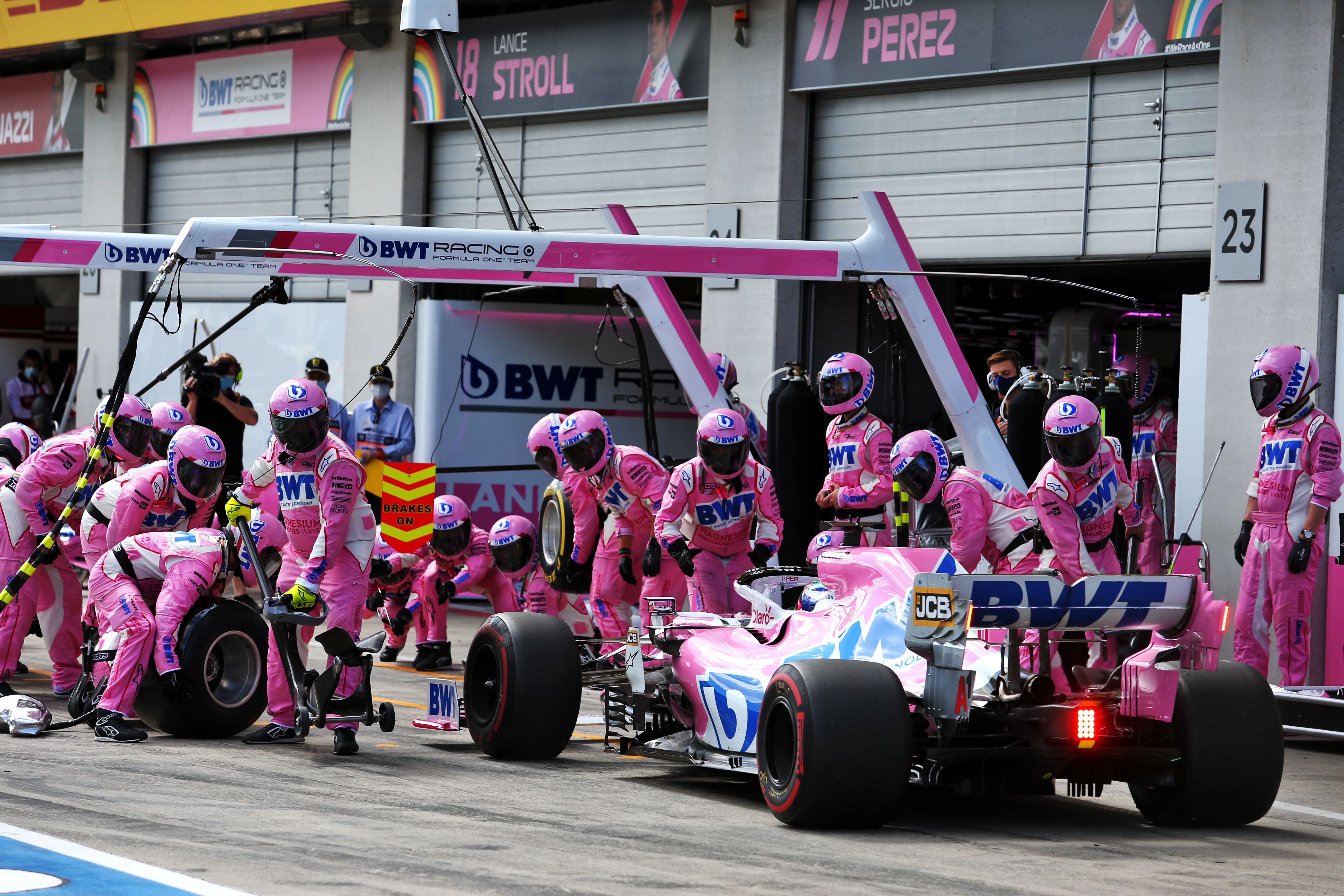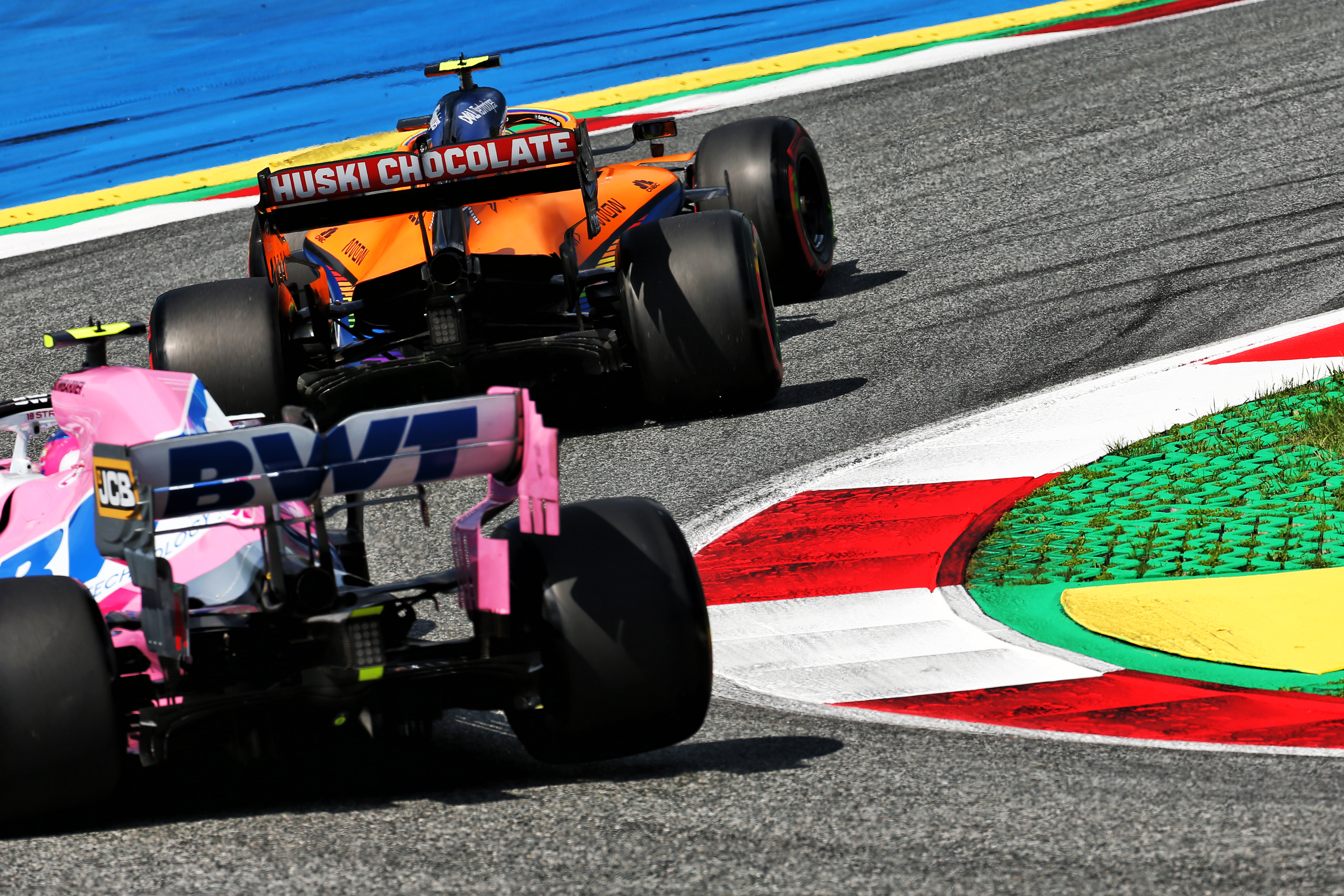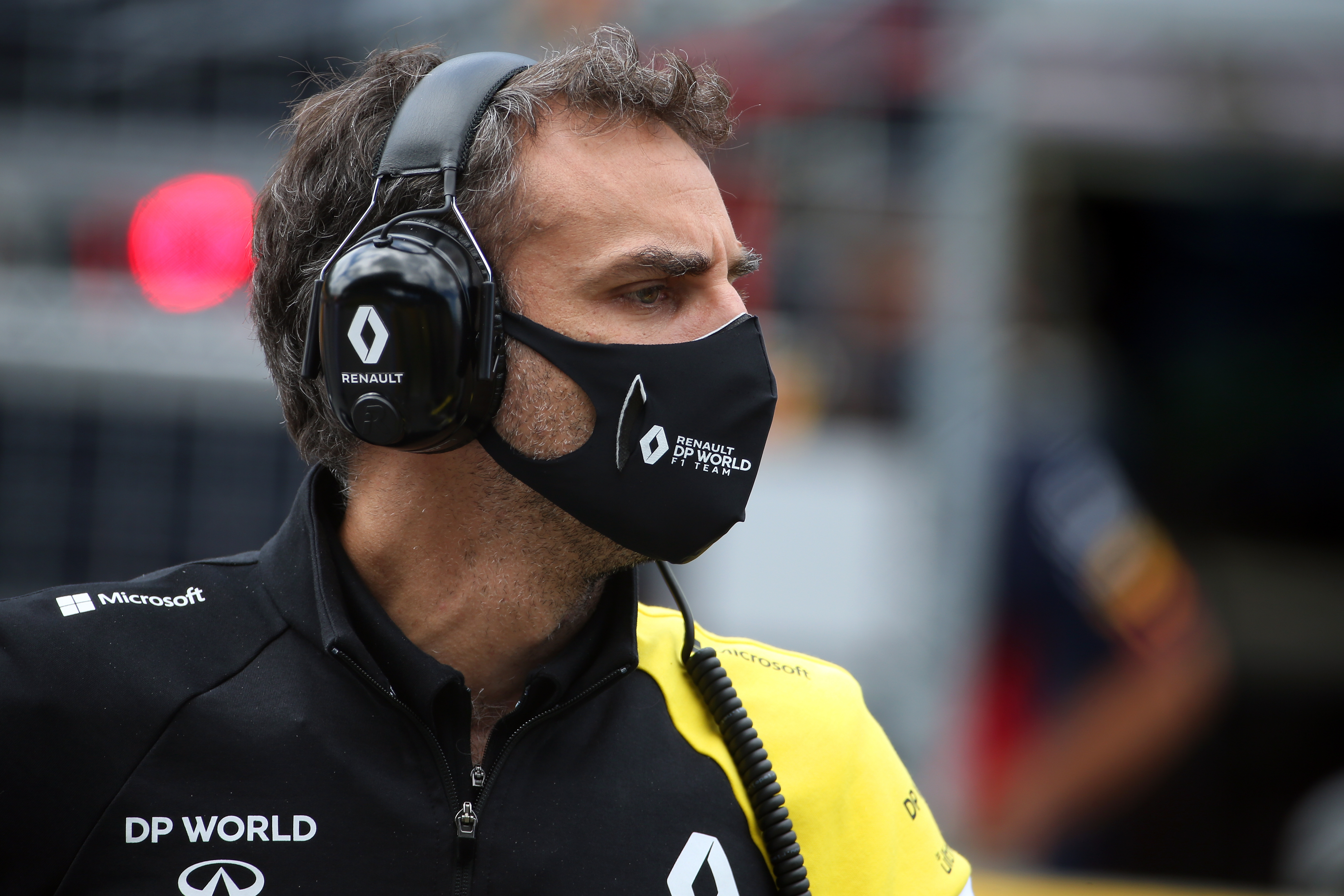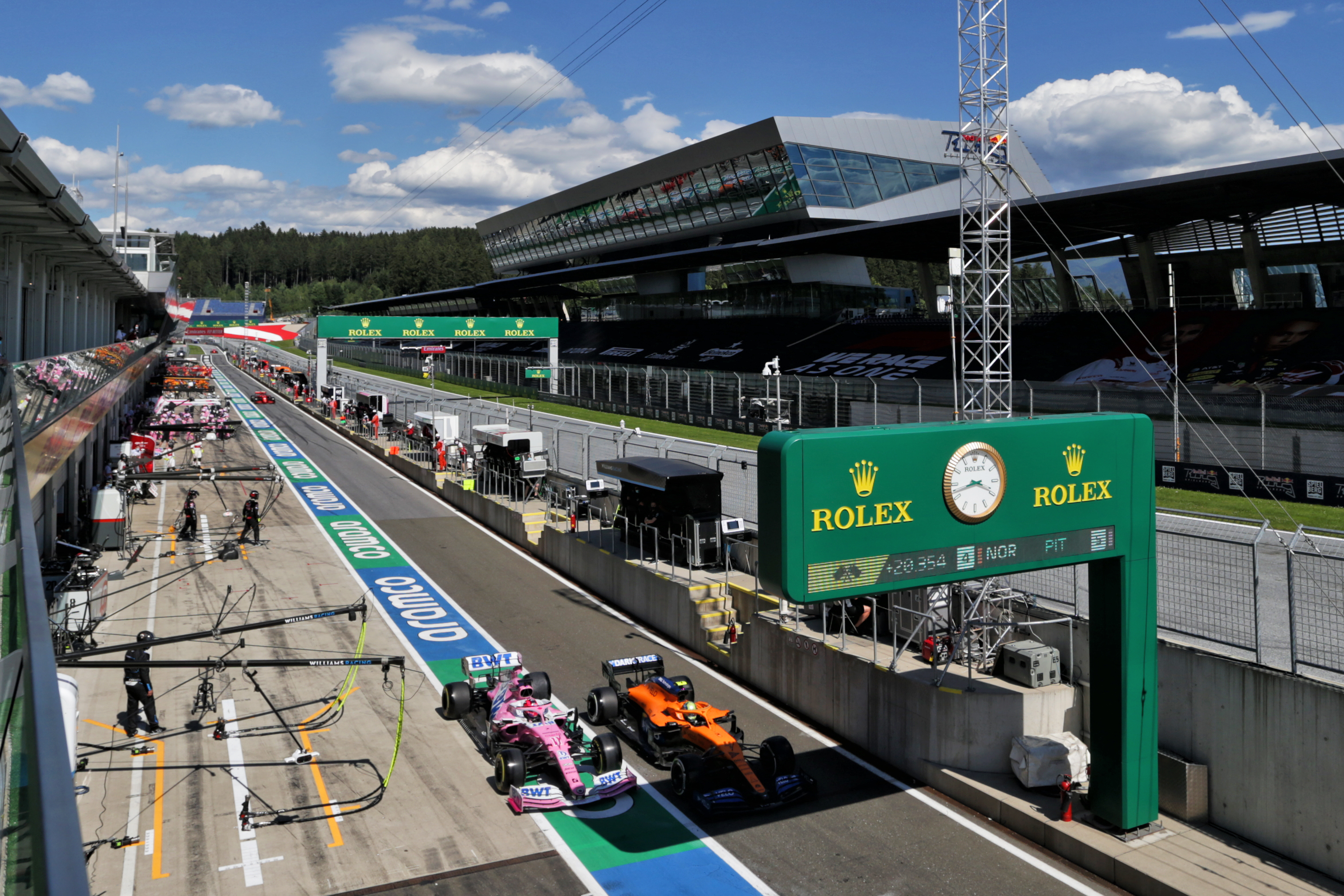Up Next

Renault’s formal protest of the legality of the 2020 Racing Point Formula 1 car design following the Styrian Grand Prix brings a long-running grievance to a head.
The similarities of the RP20 to last year’s Mercedes have been known since the car was publicly unveiled at pre-season testing and Racing Point has not shied away from the fact the 2019 Mercedes was the inspiration for its car design.
“If Racing Point complies with the regulations then they have nothing to worry about” :: Cyril Abiteboul
However it has always insisted that the 2019 Mercedes was only ever an inspiration – Racing Point says it simply studied the car from photographs any team could have gathered, and did not create its interpretation of the design through illegal means.
Its argument is that it needed to stop designing a car against the fundamental principles of Mercedes’ engine and gearbox layout – which it uses – and embrace the aero concept Mercedes has made work so effectively.
But Renault’s protest shows the French manufacturer, which has been the team hinting most at a protest since February, does not believe this has been done fairly.
Renault has been more cautious with vocalising its frustration in recent weeks but team boss Cyril Abiteboul said ahead of the first part of the Austrian double-header that Racing Point has pushed “an old debate about customers…to an extreme this year”.
It has now decided to show its position through action rather than words, despite Racing Point not achieving what it should have done in the Styrian Grand Prix.
Renault has alleged that Racing Point’s car doesn’t conform to the Listed Parts rules that require a team to produce certain components themselves.

These rules do permit a team to outscore the design and/manufacture of Listed Parts to a third party but Renault alleges that Racing Point does not have the “exclusive right to use the Listed Parts” in F1, and that Mercedes or one of Mercedes’ suppliers is responsible for the designs.
Listed Parts include the survival cell, front impact structure, roll structures, air ducts and bodywork “with the exception of airboxes, engine exhausts and any prescribed bodywork geometries”.
“If they extract the potential of this car it’s difficult for us to compete” :: Andreas Seidl
Renault’s protest therefore alleges that Racing Point has illicitly obtained information pertaining to the design of some of these parts.
The timing of Renault’s protest may seem curious but it could be down to two reasons.
It may have wanted to avoid clouding F1’s highly-anticipated return to action amid the coronavirus pandemic with a post-race protest, a position Red Bull took with the Mercedes DAS system.
And Racing Point’s ultra-impressive performance on the second weekend at the Red Bull Ring, charging from lowly grid positions earned in a wet qualifying session to what should probably have been a fourth and sixth place finish, gave it an excuse to pull the trigger and – if successful with its protest – cost Racing Point a bigger haul of points.
Both of those would tally with Abiteboul’s comments last week, when he said “it will be interesting to see the lap time, because there has been lots of speculation based on winter testing and as we all know that is very difficult to say anything from winter tests”, and reiterated that the priority was for F1 to be “back to racing”.
He also added: “We will finally have an idea of the respective competitiveness and if Racing Point complies with the regulations then they have nothing to worry about obviously.”
But the only way to be completely sure Racing Point complies with the regulations would be to get the stewards to rule on it. And that further supports the feeling this action was an inevitability.

Renault is not alone in being frustrated by Racing Point’s model. McLaren has made direct and indirect criticisms of the approach at times, especially in the aftermath of a Styrian GP in which Racing Point driver Sergio Perez should have finished fourth on merit.
“I think today we saw a bit better the potential of the Racing Point, which was quite impressive the pace they had,” said McLaren driver Carlos Sainz Jr.
“I heard that Checo had contact, he was fighting with a Red Bull, which is incredible.”
Team-mate Lando Norris, who managed to beat both Racing Points by taking advantage of Lance Stroll’s clash with Daniel Ricciardo and the damage Perez picked up clashing with Alex Albon, added: “The Racing Points are way too quick for us.
“When someone extracts all of the pace of the car like Sergio, then I think he showed how fast their car is.
“I’m not really expecting that we have much of a chance against them when they don’t make mistakes.”
AlphaTauri driver Pierre Gasly said Racing Point is “almost a top team now”, which underlines why the team’s midfield rivals are so concerned with making sure this is a legitimate approach and no breach has been committed.

Renault is a works team that has invested considerably in making progress only to the front of the midfield and has failed to bridge the gap to the big three teams of Mercedes, Red Bull and (before its massive slump this season) Ferrari.
However, by switching its aerodynamic philosophy to that of its engine supplier, Racing Point has found a shortcut to potentially occupying a middle-ground between the well-established Class A in F1 and the intense midfield fight.
Securing a ruling on how relationships between a team and a customer is in Renault’s interests because a budget cap in 2021 and new 2022 technical rules are a big opportunity to make strides compared to its current rivals.
If Renault feels those rivals are unfairly gaining an advantage, it will be a major problem.
Privately, Renault is likely to have support of other teams in the midfield. But publicly even its engine customer McLaren is occupying relatively neutral ground.

However, even team principal Andreas Seidl cannot resist the odd glancing blow at Racing Point’s expense, while reiterating how out-of-step such a model is in the pecking order.
“It doesn’t concern me because it just confirms the picture we have seen in Barcelona and also on Friday here,” Seidl said of Racing Point’s pace after the race.
“It’s just a fact that this one-year-old Mercedes is simply a quick car, which is operated by a great team.
“And we know that the development we did over the winter we didn’t make the step to get to the last year’s Mercedes, so if they extract the potential of this car it’s difficult for us to compete.”
Now a protest has finally been made, such grumbles have given way to something much more serious.





